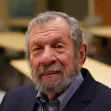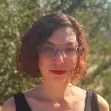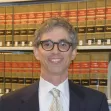Exclusives
BLOG POST
Becoming a Calvinist: First Semester Wrap-Up
<p> Four months, thousands of pages and $60 worth of printing later, my first semester of planning school is over. </p> <p> Really? That’s it? </p> <p> Not that I was understimulated. Plenty of big assignments kept me up later than my girlfriend would’ve liked. But in the working world, four months isn’t that long—it’s a big project, a new initiative. In grad school, apparently, it’s reason enough to take a month off. </p> <p> So without any further ado, a few highlights and lowlights from the first semester. Not too many lowlights, though. A few of my professors read this blog. </p>
BLOG POST
More versus Different
<p>In the last six months I have been fortunate to work in a variety of communities - from rural counties in Pennsylvania and Virginia, to small towns and cities in New Mexico and New York, to larger cities in Alaska, Connecticut, and Virginia. Each place has suddenly been confronted with the advent of new dollars. New money at any point in time is a valuable, and especially scarce resource. But in this economy this is even more the case. As communities are faced with reduced sales and property taxes, and consistent demand for services, any new funds are a welcomed addition to the work of balancing the books.</p>
BLOG POST
Skills in Planning: Writing Literature Reviews
<p> <span style="font-size: small"><span style="font-family: Times New Roman">Terrorized by the literature is the title of a chapter of Howard Becker’s excellent book, <em>Writing for Social Scientists</em> (1986, Chicago). Whether through terror or misunderstanding, the literature review is one of the areas that students in planning find most confusing. While I have dealt with the literature review briefly in my blog on writing <a href="/node/29949" target="_blank">proposals</a>, the tips below provide more detailed advice on how to compose a literature review and how to find important literature in the age of information overload.</span></span><em><span style="font-size: small; font-family: Times New Roman"> </span></em> </p>
BLOG POST
What A Difference A Year Makes
In late 2007, it was with increasing frustration that I penned and op-ed entitled "Make Miami a Bicycle-Friendly City." Appearing in the December 13th edition of the Miami Herald, the article implored City officials to make the city more amenable to bicycling (It was no surprise in the spring of 2008 when Bicycling Magazine named Miami <a href="http://www.bicycling.com/article/0,6610,s1-2-18-17082-1,00.html">one of the three worst cities in America in which to bicycle</a>). <br /> <p class="MsoNormal"> The City's response exceeded all of my expectations. </p>
BLOG POST
Be Afraid of "Real Nice"
<p class="EC_MsoNormal"> <span style="font-size: small"><span style="color: #000000"><span style="font-family: Garamond">You have heard it, or seen it, before.<span> </span>A developer comes in for a presubmittal meeting, and he is <em>excited</em>. He has the best project your city has <em>ever</em></span><span style="font-family: Garamond"> seen, and, when all is said and done, he insists that the city will never be the same.<span> </span>And he’s right.<span> </span>
BLOG POST
Making Urban Planning Fun, For Kids (and Everyone)
When Chris Steins approached me with his idea to write a kids book about urban planning, I was a little skeptical. We had gotten a hold of a book from 1952 called <em>Neighbor flap foot. The City Planning Frog</em>, by Bill Ewald, Jr. and Merle Henrickson, and to be generous, it wasn’t fit for a modern audience. Here’s a sample: <br /> <br /> <blockquote> “Did you know that there is a special rule from City Hall to make sure each house has plenty of light and air, Mickey?” the wise frog asked. <br /> “No, I haven’t heard about that.”<br /> “Well, there is. Blue Nose told me about it,” answered Flap Foot, hopping about to limber up his stiffened legs. “It’s is called <em>zoning.</em> It is a good rule, like brushing your teeth, only this rule is for people who build buildings.”<br /> </blockquote>
FEATURE
Education Suffers in NY Projects
BLOG POST
The Lesser Evil
<p> Due to the collapse of local tax revenues caused by the national economic downturn, many transit systems may face shortages of money over the next year or two. Assuming this is the case, transit providers will have to either raise fares or reduce services by eliminating bus routes or otherwise reducing transit service. </p> <p> It seems to me that raising fares is generally the lesser evil, both from the standpoint of an individual rider and from the standpoint of the transit agency itself. </p>
BLOG POST
The Studio: University-Community Partnerships in Microsize
<!-- /* Font Definitions */ @font-face {font-family:"Cambria Math"; panose-1:2 4 5 3 5 4 6 3 2 4; mso-font-charset:0; mso-generic-font-family:roman; mso-font-pitch:variable; mso-font-signature:-1610611985 1107304683 0 0 159 0;} @font-face {font-family:Calibri; panose-1:2 15 5 2 2 2 4 3 2 4; mso-font-charset:0; mso-generic-font-family:swiss; mso-font-pitch:variable; mso-font-signature:-1610611985 1073750139 0 0 159 0;} /* Style Definitions */ p.MsoNormal, li.MsoNormal, div.MsoNormal {mso-style-unhide:no; mso-style-qformat:yes; mso-style-parent:""; margin:0in; margin-bottom:.0001pt; mso-pagination:widow-orphan; font-size:11.0pt; font-family:"Calibri","sans-serif"; mso-fareast-font-family:Calibri; mso-fareast-theme-font:minor-latin; mso-bidi-font-family:"Times New Roman";} .MsoChpDefault {mso-style-type:export-only; mso-default-props:yes; font-size:10.0pt; mso-ansi-font-size:10.0pt; mso-bidi-font-size:10.0pt;} @page Section1 {size:8.5in 11.0in; margin:1.0in 1.0in 1.0in 1.0in; mso-header-margin:.5in; mso-footer-margin:.5in; mso-paper-source:0;} div.Section1 {page:Section1;} --> <p class="MsoNormal"> I had the pleasure of attending two studio final presentations at the Georgia Tech planning program this month: the Lindbergh/Lavista Community studio and the Friendship Village studio. I'm hardly a neutral observer: I chair the program; but I'm new here and really didn't know what to expect. I came away refreshed at the insights of the students and enthused at way the university partners with communities to advance good planning.
FEATURE
BRT: A Case of Mistaken Identity
BLOG POST
Booze It Up for Barry and Save the Capitol
When President-elect Barack Obama is inaugurated on January 20, the city of Washington D.C. is likely to be the most lively, exciting and vibrant city in the world. Millions will be there. Hotels for miles around are booked full, couches across the city will be crashed upon, and many in the city are expecting the party to last for days. City officials are doing what they can to make sure the party does indeed happen.<br />
BLOG POST
Colossal Sprawl in Greater Toronto
<em> <p align="left"> "Why did nobody notice it? If these things were so large, how come everyone missed them?" - Queen Elizabeth, on the global credit crunch. </p> </em> <p align="left"> Things are so large in the Vaughan Corporate Centre, an edge city about 20 kilometres northwest of downtown Toronto, that a cross-section of Vancouver's downtown peninsula, from False Creek to Lost Lagoon, could fit within five of its blocks. </p> <p align="left"> There's a street named Colossus, leading to a cineplex of the same name. The overpass and ramps of the adjacent freeways take up an area the size of the West End. They in turn are surrounded by acres of emptiness, just grass and dirt, awaiting more big boxes, more asphalt. </p>
BLOG POST
What Canada's Political Drama Could Mean for Cities
<p> While Americans and Canadians alike watched the U.S. presidential race with growing enthusiasm and passion over the past two years, it may have slipped the notice of our American friends that we actually had a federal election here in October. </p> <p> It was a decidedly passionless affair: the <a href="http://www.cbc.ca/news/canadavotes/story/2008/10/15/voter-turnout.html">lowest voter turnout in Canadian history</a> helped to ensure that almost nothing changed in Ottawa in terms of the balance of power. The Conservatives were returned with a minority mandate, and the once seemingly undefeatable <a href="http://www.nytimes.com/2008/10/21/world/americas/21canada.html?n=Top/News/World/Countries%20and%20Territories/Canada">Liberals had their worst showing ever</a>. </p>
BLOG POST
Grad School: Like a Conference, but With Less Sex
<p> Most of the time it’s not that hard to kind of forget that I’m a grad student. It often feels like a long, ongoing conference, but without nametags: We hear speakers (sometimes known as professors), have long lunch breaks, do exercises, then retire to the bar at night to talk about all of it. </p> <p> More similarities: None of our classrooms would be mistaken for hotel conference centers, but a bunch of them <em>are</em> windowless and characterless. People are cordial, but also kind of angling for a job. Everybody’s friendly, and sometimes, people hook up. </p> <p> Then reality comes crashing down like a pile of books: oh yeah. Exams. We have to take those. </p>
BLOG POST
Smart Economic Stimulation
<p style="margin: 0cm 0cm 0pt" class="MsoNormal"> <span style="font-size: small; font-family: Times New Roman">Economic stimulation is an important issue these days. Let’s be smart when choosing economic stimulation strategies. </span> </p>
BLOG POST
Skills in Planning: The Planning Portfolio
<p class="MsoNormal"> With the return to prominence of physical planning and increasing use of GIS, planning students are becoming interested in developing portfolios of their work. This blog entry provides tips for this process exploring why portfolios are useful, who they are aimed at, and how to design the portfolio. It provides many of the resources needed to design your own! </p>
BLOG POST
Thanksgiving
<p class="MsoNormal"> Since tomorrow is Thanksgiving, I thought I would ask myself: what I am thankful for that is related to urbanism? </p>
FEATURE
Community-Based Progress in Post-Katrina New Orleans
The grieving period has ended, and now resilient New Orleaneans are taking it upon themselves to rebuild their beloved city. Though it's sure to be a slow process, this could very well be community organization at its best.
Pagination
Heyer Gruel & Associates PA
JM Goldson LLC
Custer County Colorado
City of Camden Redevelopment Agency
City of Astoria
Transportation Research & Education Center (TREC) at Portland State University
Jefferson Parish Government
Camden Redevelopment Agency
City of Claremont
Urban Design for Planners 1: Software Tools
This six-course series explores essential urban design concepts using open source software and equips planners with the tools they need to participate fully in the urban design process.
Planning for Universal Design
Learn the tools for implementing Universal Design in planning regulations.


































